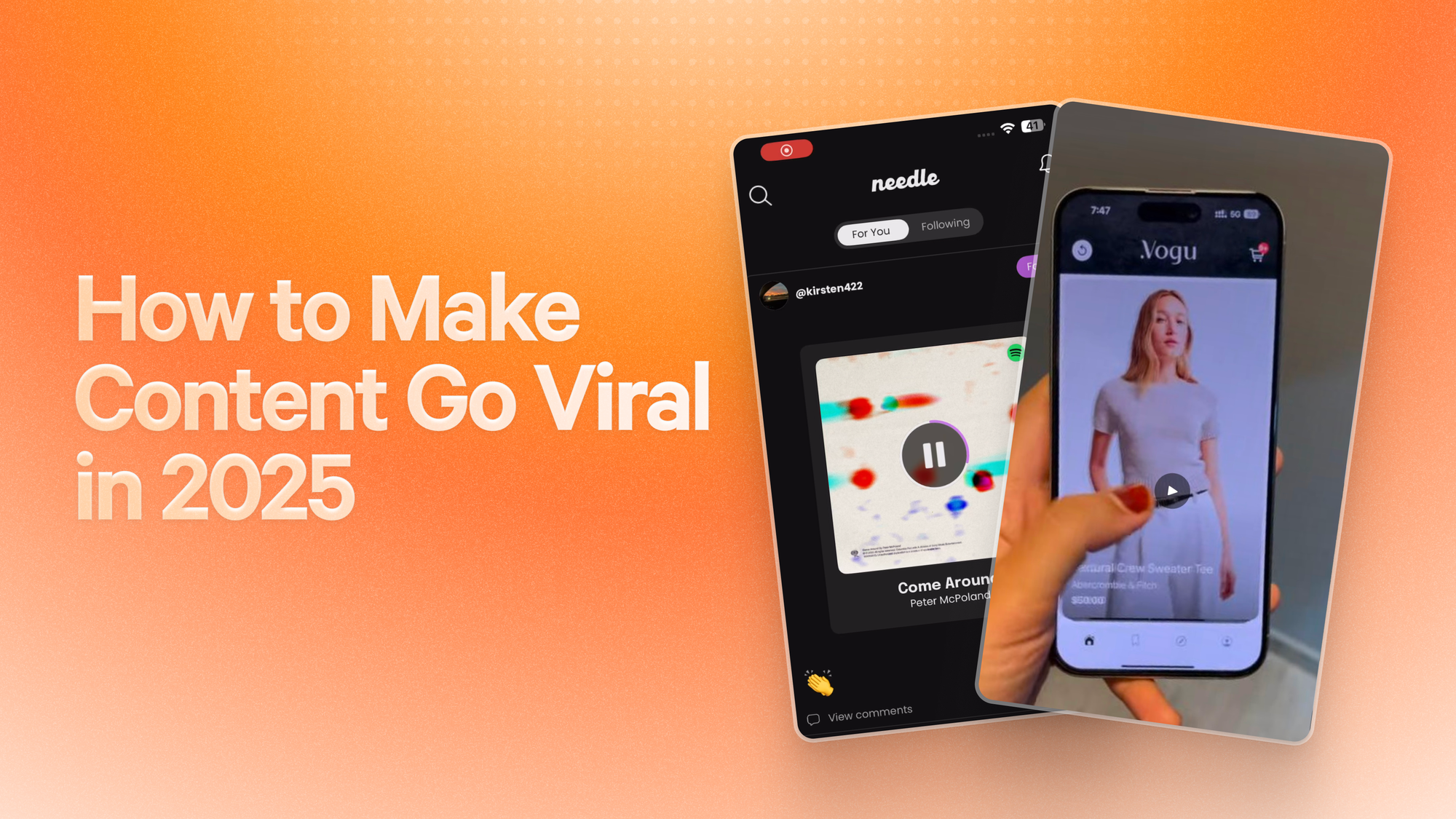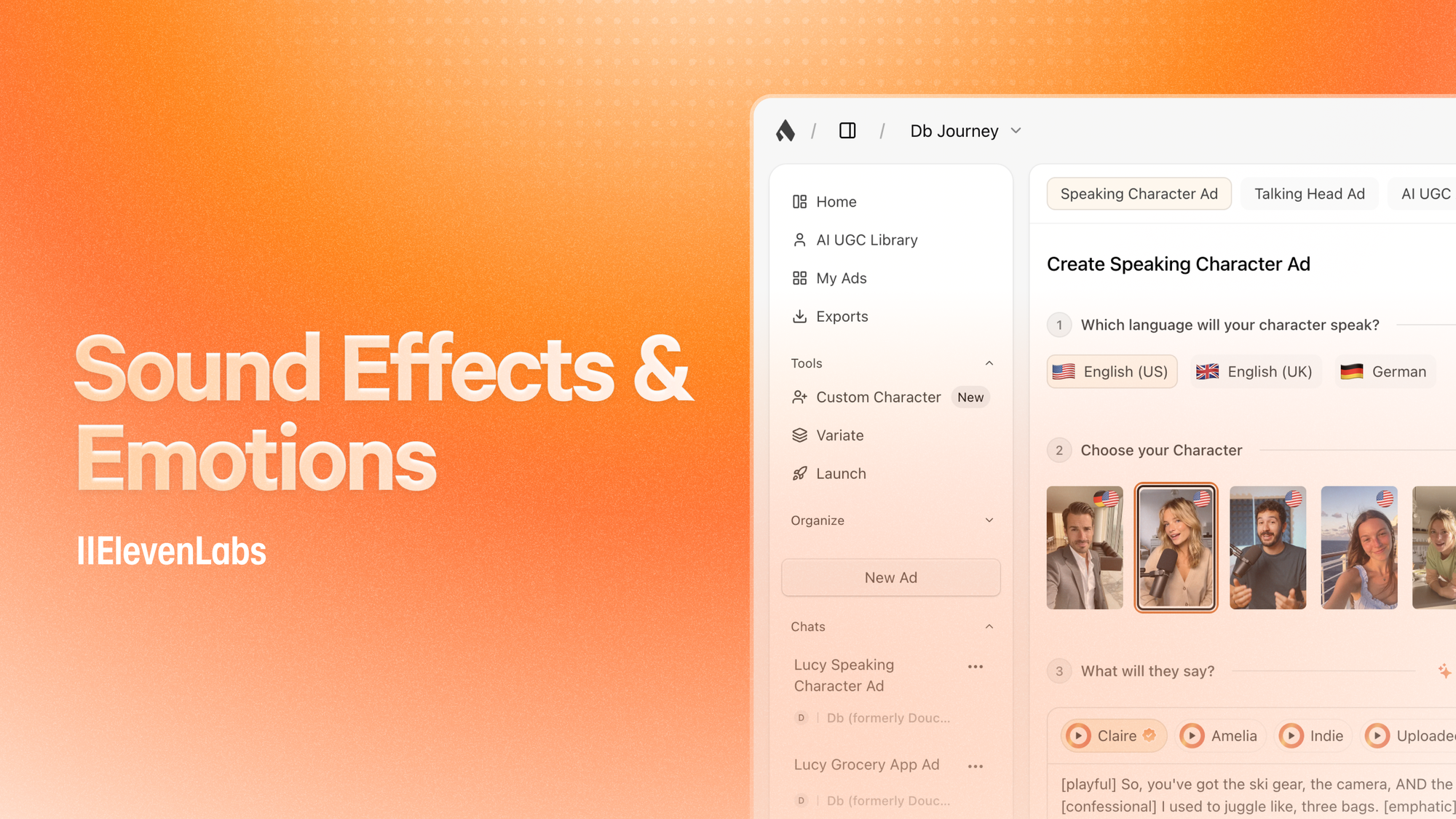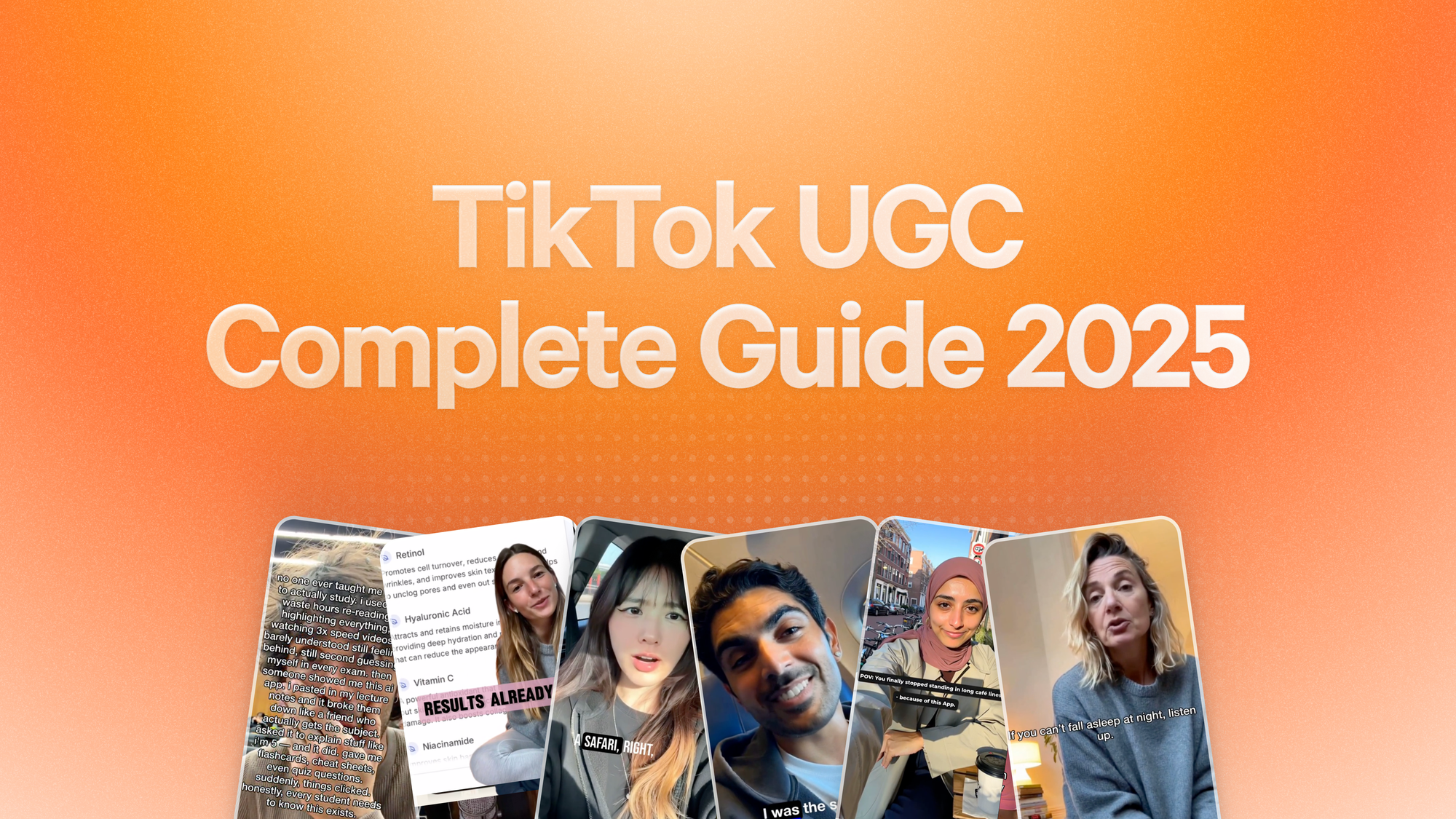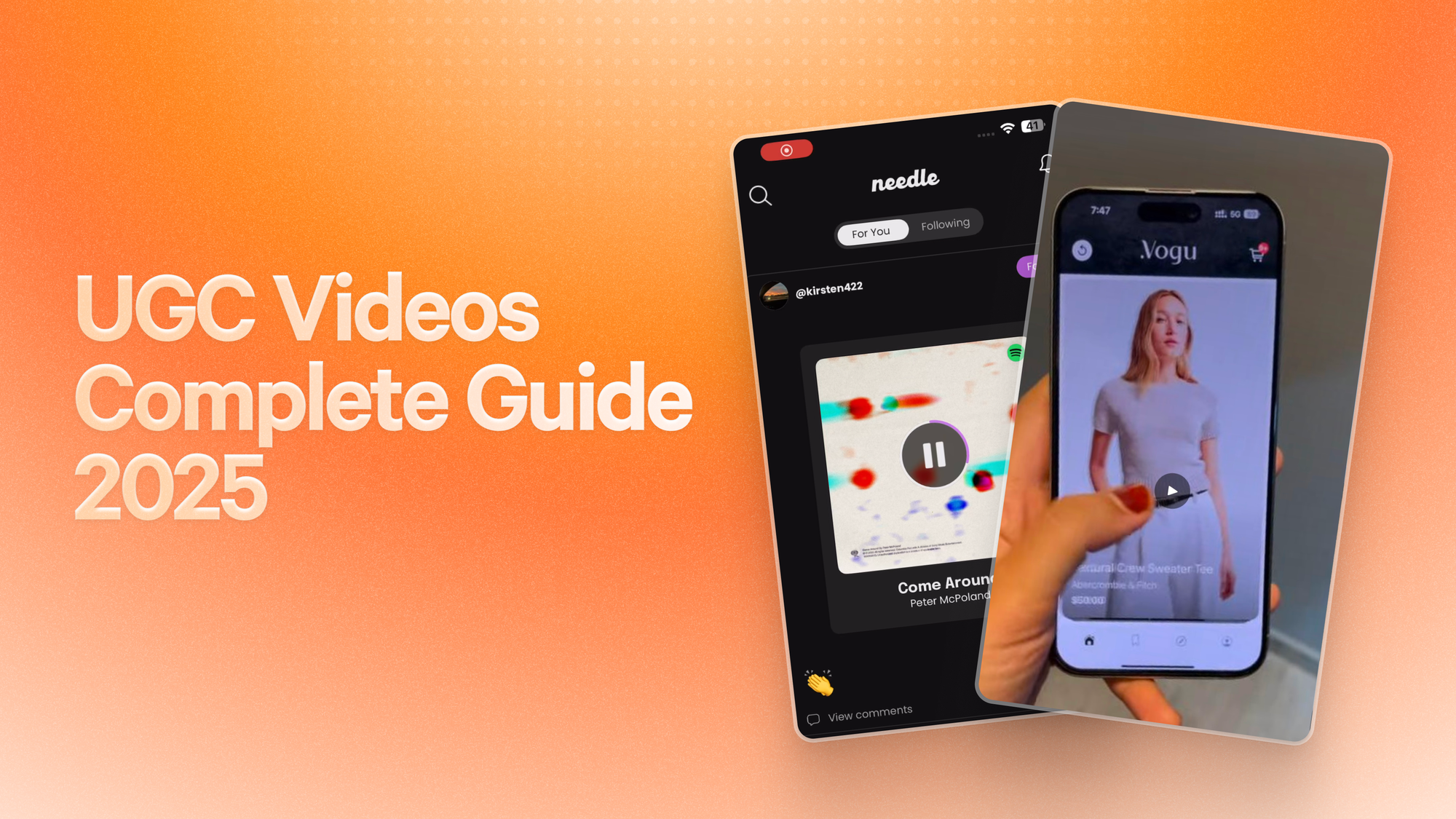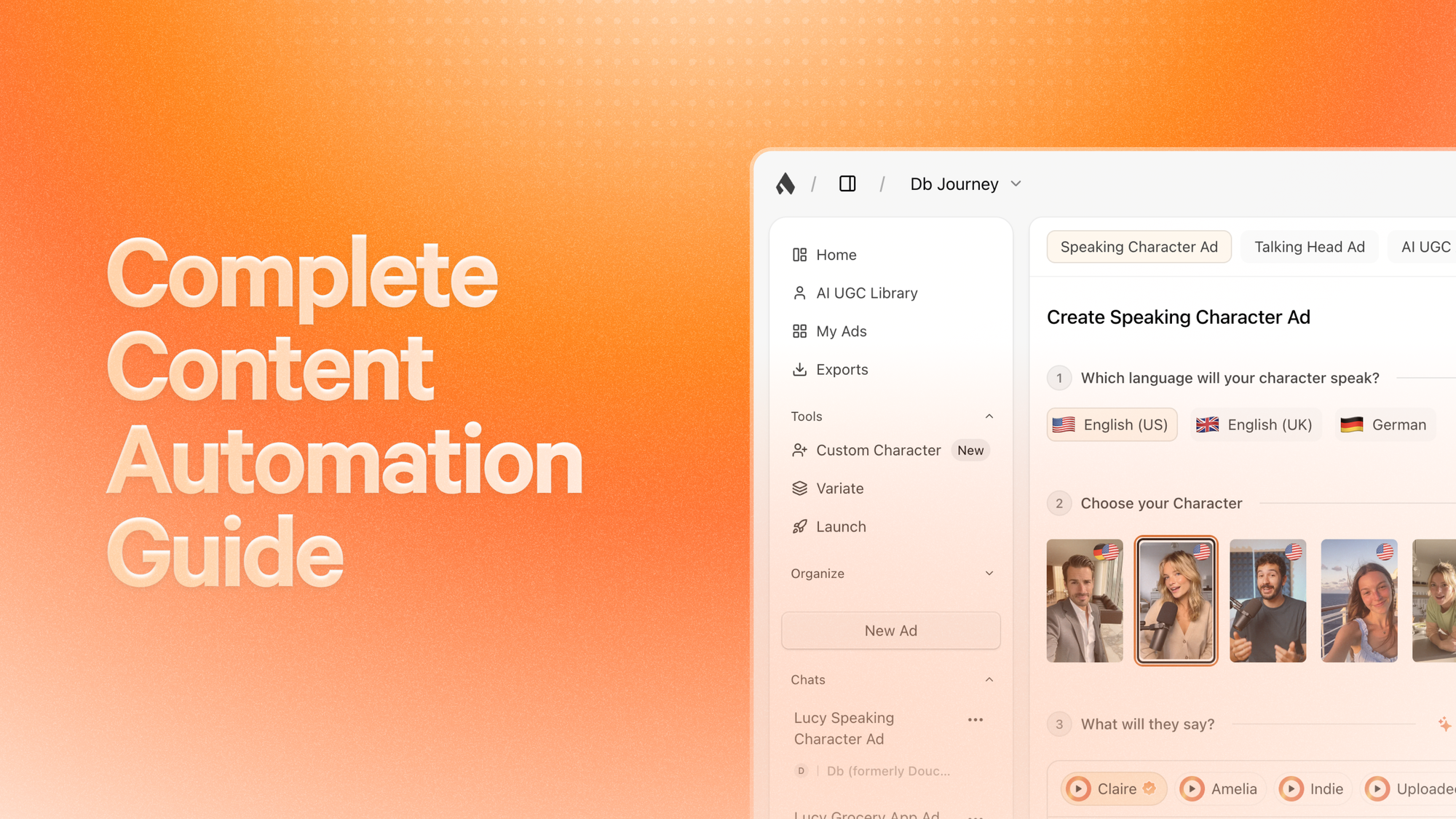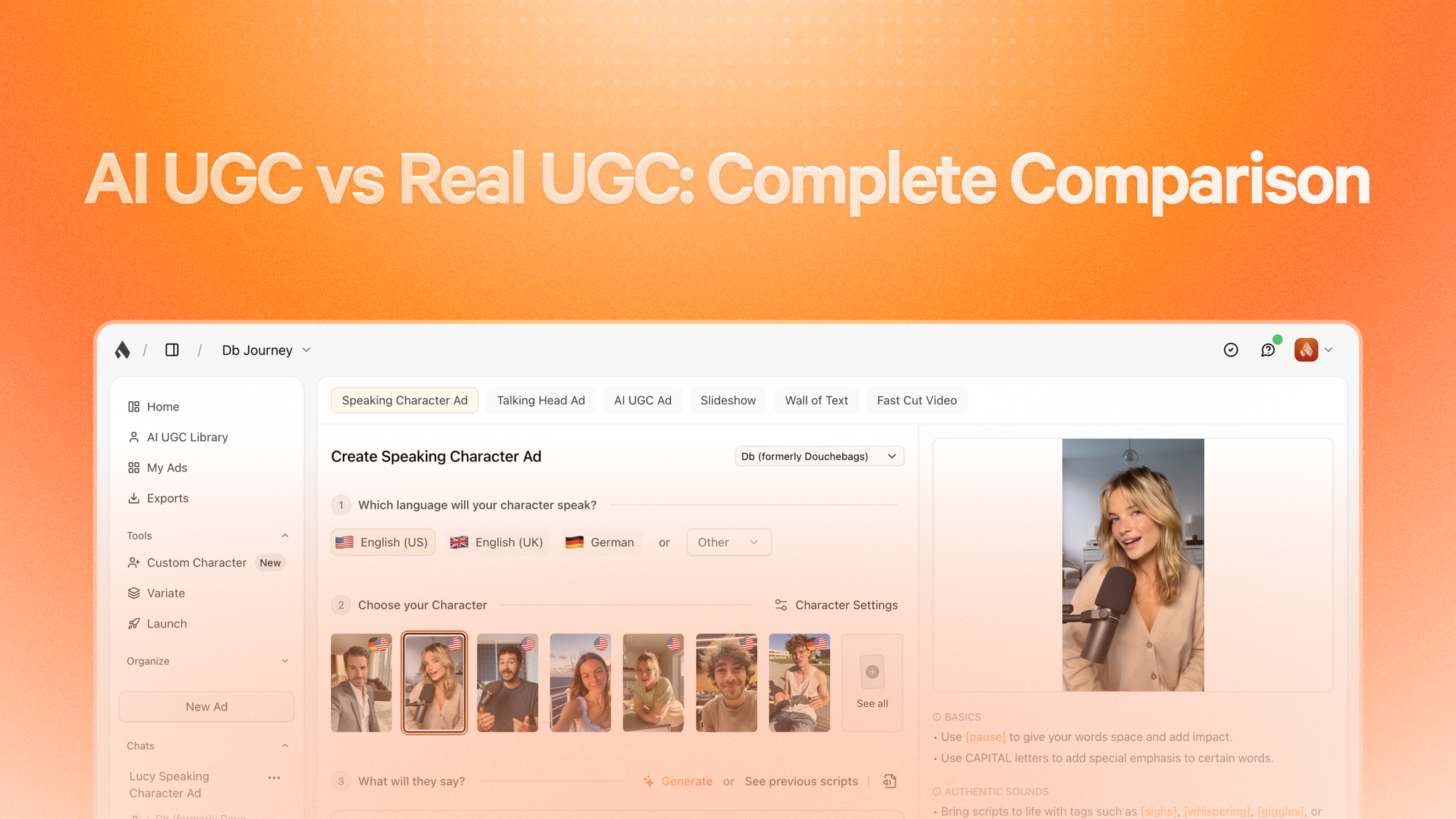How to Make Content Go Viral: Data-Driven Framework
Forget throwing content at the wall and hoping something sticks. Virality isn't about luck, it's about understanding the psychological triggers, emotional mechanics, and strategic frameworks that consistently drive shares across platforms. While most creators rely on intuition or copying trending formats, successful viral content follows predictable patterns rooted in behavioral science and data-driven testing.
The Relatability Factor: Why Feeling Matters More Than Facts
The foundation of viral content isn't clever copywriting or stunning visuals, it's emotional resonance that makes viewers feel deeply connected to your message. Research consistently shows that content evoking high-arousal emotions like awe, amusement, anger, and inspiration generates significantly more shares than neutral or purely informational posts.
The Science of Emotional Contagion
When content triggers strong emotions, it activates mirror neurons that create empathy and identification with the story being told. This neurological response isn't just about feeling good it's about the viewer's need to share that emotional experience with others. Studies on viral content psychology reveal that people share primarily for self-referential reasons: to express identity, gain social currency, and signal values to their network.
The most shareable content hits multiple emotional triggers simultaneously. Research by Fractl found that content eliciting complex emotional blends especially contrasting valences like sadness paired with hope or fear combined with relief—was more likely to be shared than single-emotion content. This complexity creates what researchers call "conversation utility"—giving viewers something meaningful to discuss when they share.
Identity-Driven Sharing Behavior
People don't just share content they like; they share content that makes them look good. Every share is a micro-broadcast of identity, and viewers unconsciously evaluate how forwarding your content reflects on their personal brand. This means viral content must answer the unspoken question: "What does sharing this say about me?"
Content that succeeds at scale typically offers one of three identity benefits: competence signaling (making the sharer appear knowledgeable), taste signaling (showing aesthetic or cultural sophistication), or value signaling (expressing moral or political alignment). The most powerful viral content stacks multiple signals—offering insider knowledge that demonstrates both competence and taste while aligning with audience values.
The FOMO Amplification Effect
Fear of Missing Out isn't just a millennial phenomenon, it's a fundamental driver of viral mechanics. Content that creates urgency through timing, novelty, or cultural relevance taps into viewers' need to stay current and connected. When audiences perceive they might miss out on a conversation or cultural moment by not sharing, the psychological pressure to participate increases dramatically.
This explains why trending sounds, breaking news commentary, and time-sensitive tips spread faster than evergreen content with similar quality. The window for participation feels limited, creating artificial scarcity that motivates immediate action. Start by analyzing your top 5 performing posts this month, identify which FOMO elements they contain, then replicate those specific urgency triggers in your next 3 pieces of content by incorporating trending hashtags, current events, or limited-time perspectives that make sharing feel urgent.
Social Proof and Network Effects
Virality creates its own momentum through social proof mechanisms. When viewers see high engagement numbers, trending labels, or friend activity, they unconsciously interpret these signals as validation of the content's worth. This reduces the perceived risk of sharing while increasing the likelihood that others will also find the content valuable.
The most successful viral content includes built-in social proof elements: user-generated responses, before-and-after transformations, or community reactions that demonstrate widespread approval. These elements don't just show popularity they reduce friction by providing implicit permission to share.
Emotional Validation Loops
Truly viral content creates emotional validation loops where sharing reinforces the viewer's emotional response. When someone shares inspirational content and receives positive feedback from their network, it amplifies both their original emotional experience and their likelihood of sharing similar content in the future. This creates compound effects where audiences become advocates for specific types of emotional content.
Understanding these validation loops allows you to map out the specific emotions your audience celebrates when sharing.
Start using Superscale to test emotional triggers systematically
Generate 50 AI creator variations targeting different emotions for the cost of one traditional creator video, discover exactly which psychological patterns make your audience share before investing in expensive content production.
Universal Viral Patterns: What Works Everywhere
Despite platform differences, certain content patterns consistently drive viral performance across TikTok, Instagram, YouTube, Twitter/X, and LinkedIn. These universal mechanics transcend algorithm specifics and tap into fundamental human psychology that remains constant regardless of platform interface or audience demographics.
The Hook-Value-Share Architecture
The most reliable viral framework follows a three-part structure:
- Irresistible hook
- Concentrated value delivery, and
- Explicit share trigger.
This architecture works because it aligns with both human attention patterns and platform algorithms that reward retention and engagement.
The hook must stop scrolling within three seconds through visual impact, emotional trigger, or cognitive dissonance. Research on viral short-form content shows that videos maintaining strong retention through the first 3-7 seconds are exponentially more likely to reach viral thresholds, with TikTok's retention rate reaching 78% for videos that capture attention immediately versus 65% for those with slow starts. The hook is less of an opener but a promise that the following content will deliver specific emotional or practical value.
Value delivery must be concentrated and immediate. Whether it's a counterintuitive insight, practical tip, or emotional revelation, the payload needs to justify the hook's promise within 15-30 seconds for video or the first paragraph for text. This compression forces clarity and ensures that even partial attention delivers meaningful value.
The share trigger closes the loop by explicitly prompting distribution. This isn't just "share if you agree", it's strategic design that makes sharing feel natural and beneficial. Effective triggers include "send this to someone who needs to hear it," "save this for when you need motivation," or prompts that encourage response and discussion.
Trend Participation Strategy
Universal viral patterns include strategic trend participation that demonstrates cultural fluency without sacrificing brand authenticity. This doesn't mean jumping on every meme—it means identifying cultural moments that align with your content's core value proposition and audience interests.
Effective trend participation involves three elements:
- timing (entering while trends are ascending, not peaked)
- authenticity (genuine connection to your message rather than forced relevance), and
- value-add (contributing something new rather than just participating).
The most viral trend content uses popular formats or sounds to frame original insights or unique perspectives.
Community-Driven Amplification
Viral content rarely spreads through broadcast alone. It requires community participation and user-generated responses. The most successful viral content includes elements that invite remixes, responses, or adaptations from other creators. This might be through direct features like TikTok duets and Instagram story replies or implicit prompts that encourage similar content creation.
Community amplification works because it distributes content creation effort. When audiences create responses or adaptations, they're not just consuming your content—they're extending its reach through their own networks while reinforcing the original message through repetition and variation.
Algorithmic Alignment Principles
While specific algorithms change frequently, they consistently reward content that generates meaningful engagement rather than passive consumption. Universal patterns that satisfy algorithmic preferences include:
- early engagement (comments, shares, saves in the first hour)
- sustained attention (high completion rates or long dwell time), and
- continuing conversation (ongoing comments and responses).
Content designed for algorithmic distribution incorporates engagement hooks throughout rather than just at the beginning. This might include mid-content questions, surprising reveals, or emotional beats that encourage specific responses. The goal is creating content that platforms interpret as valuable based on user behavior rather than just initial reach.
Your Step-by-Step Approach
Creating consistently viral content requires systematic methodology rather than creative intuition alone. The most successful creators and brands use structured frameworks that combine psychological insights with data-driven iteration to maximize shareability across content pieces.
Phase 1: Audience Emotional Mapping
Begin by identifying your audience's core emotional drivers and pain points through data analysis rather than assumptions. Use platform analytics to identify your highest-engagement content and analyze the specific emotional triggers that generated responses. Look beyond vanity metrics to understand which emotions drive comments, saves, and shares specifically.
Closely look at existing high-performing content in your niche to identify recurring emotional patterns. What fears, aspirations, or identity markers consistently appear in viral posts? How do successful creators frame familiar topics to generate fresh emotional responses?
Phase 2: Content Architecture Development
Design reusable content templates based on viral storytelling structures that have consistently performed across platforms.
The most reliable frameworks include transformation narratives (challenge → growth → outcome), conflict resolution stories (problem → struggle → solution), and revelation content (misconception → truth → application).
Each template should specify the emotional journey, key transition points, and built-in shareability elements. Document the specific hooks, value propositions, and calls-to-action that work best for each narrative structure.
Develop modular content components that can be remixed across platforms while maintaining core messaging. This systematization allows for rapid content creation while maintaining strategic consistency.
Phase 3: Emotional Trigger Testing
Rather than guessing which emotions will resonate, systematically test different emotional approaches with your audience. Create content variants that emphasize different emotional triggers (awe vs. amusement vs. inspiration) while keeping other elements constant. Track which emotions generate the highest sharing rates and engagement quality. E.g. pair contrasting emotions (hope with urgency, humor with insight) to create content that feels nuanced and discussion-worthy.
Phase 4: Format Optimization and Platform Adaptation
Identify the content formats that best deliver your core emotional triggers across different platforms. Video might work best for transformation stories on TikTok, while carousel posts excel for insight-driven content on LinkedIn. Test format-emotion combinations to find optimal pairings.
Phase 5: Community Integration and Response Strategy
Design content with built-in community participation elements that encourage user-generated responses and adaptations. This might include challenges, question prompts, or remix-friendly formats that invite audience co-creation. Community participation amplifies reach while reducing your content creation burden.
Create systems for monitoring and responding to viral content performance in real-time. When content begins gaining traction, rapid response and engagement can accelerate algorithmic distribution and extend the viral lifecycle.
Phase 6: Data Collection and Framework Refinement
Implement comprehensive tracking that goes beyond platform metrics to understand true viral performance. Track sharing rates, comment sentiment, cross-platform spread, and long-term audience growth rather than just reach and engagement numbers. These deeper metrics reveal sustainable viral strategies versus one-time hits.
Consistently implement a monthly content audit, categorize your last 20 posts by performance and emotional triggers used, then eliminate the bottom 3 triggers from next month's content calendar while doubling down on your top 2 emotional patterns. This way you develop predictive frameworks that dramatically improve your viral hit rate.
Stop wasting time on content that doesn't convert.
Superscale let you test 10 different emotional triggers in a single day for less than the cost of one traditional video shoot. Build your viral framework faster than your competitors can even plan their next campaign, start optimizing your content strategy using Superscale.
Frequently Asked Questions
How long does it typically take for content to go viral?
Most viral content shows initial traction within the first 2-4 hours after posting, with peak sharing occurring within 24-48 hours. Research shows that 63% of TikTok videos that highlight key messages in the first 3 seconds achieve higher engagement rates, while content with delayed hooks sees 47% lower viral potential. TikTok and Twitter/X can produce viral results within hours, while LinkedIn and YouTube often require several days to build momentum. Research shows that viral content follows predictable patterns, with 73% of viral content receiving its highest engagement within the first 24 hours of posting. The key indicator is engagement velocity—content that gains above-average likes, comments, and shares in the first hour has higher viral potential regardless of platform.
Can you manufacture viral content, or is there always an element of luck?
While you can't guarantee virality, you can dramatically increase the probability through strategic framework application. Research shows that viral content follows predictable patterns: high-arousal emotional triggers, clear value delivery, social currency for sharers, and platform-native presentation. A 2025 study found that systematic application of emotional frameworks improved viral success rates by 340% compared to intuitive content creation. The "luck" element often comes from cultural timing and algorithmic factors, but systematic application of proven frameworks can achieve viral-level performance consistently, even if specific pieces don't reach massive scale.
How do you balance authenticity with viral content strategies?
Authenticity enhances rather than contradicts viral strategies when done correctly. The most sustainable viral creators use frameworks to amplify their genuine perspectives and expertise rather than adopting false personas. Focus on emotional triggers that align with your natural communication style and values. Use narrative structures that showcase real experiences and insights. Authenticity actually increases shareability because audiences can sense genuine connection and are more likely to trust and share content from creators they perceive as honest.
What's the biggest mistake people make when trying to create viral content?
The most common mistake is focusing on reach metrics instead of engagement quality and shareability. Many creators optimize for views or likes rather than the specific behaviors that drive viral spread: shares, saves, meaningful comments, and cross-platform discussion. Another major error is copying viral content formats without understanding the underlying emotional triggers and audience psychology that made the original content successful. Focus on why content goes viral, not just what viral content looks like.
How do you maintain viral momentum once content starts performing well?
Viral momentum requires active engagement and strategic follow-up rather than passive observation. Respond quickly to comments to encourage continued discussion. Create follow-up content that builds on viral themes while the audience is still engaged. Cross-promote viral content across other platforms to maximize reach. Engage with user-generated responses and adaptations to encourage community participation. Many viral opportunities are lost through poor follow-up rather than weak initial content.
Should you delete content that doesn't perform well?
Generally no. Poor performing content provides valuable data about what doesn't resonate with your audience and can still contribute to overall brand presence. However, content that generates consistently negative responses or misrepresents your brand should be reconsidered. Instead of deleting, analyse unsuccessful content to identify patterns in emotional triggers, timing, or format that didn't work. This analysis improves future content strategy and helps avoid repeating ineffective approaches.


